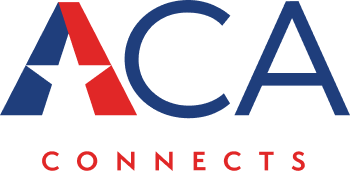April 24, 2024—ACA Connects Chief Regulatory Counsel Brian Hurley today participated in an informal hearing at the Federal Trade Commission (FTC) on the proposed Trade Regulation Rule on Unfair or Deceptive Fees.
In his testimony, Hurley said that ACA Connects Members support providing easy-to-understand and transparent pricing for customers. He urged the FTC to not apply any final rule to communications providers or services because it is unlawful and would burden smaller providers with duplicative and burdensome requirements that would confuse and frustrate customers.
The following are excerpts of his remarks to the FTC, as prepared for delivery:
SMALL PROVIDERS OFFER CLEAR & TRANSPARENT PRICING
“As community-based providers, ACA Connects Members maintain high standards of honesty and transparency in their dealings with customers and potential customers, who are often neighbors, friends and family. That means disclosing sufficient information about their offerings so that customers can select services that are right for them and within their budget. Also, in today’s competitive marketplace, ACA Connects Members and other communications providers have every incentive to avoid ‘bill shock’ or other negative experiences that could induce customers to take their business elsewhere. They are also eager to tout low prices, new technologies or speed tiers, and other aspects of their offerings that may differentiate them from competitors.
“The Proposed Rule would take the unwarranted step of imposing prescriptive obligations on ACA Connects Members and other communications providers regarding how they advertise and display prices for their services. This would be a mistake, for several reasons.
THE FTC’S RULE IS UNLAWFUL
“First, the rule would be unlawful because it fails to satisfy the requirements of Magnuson-Moss Warranty Federal Trade Commission Improvements Act. Under that statute, the FTC may not advance a rulemaking unless it has ‘reason to believe that the unfair or deceptive acts or practices which are the subject of the proposed rulemaking are prevalent.’ There is no basis for such a belief, at least with respect to the communications industry, and the NPRM does not suggest otherwise. On the contrary, the NPRM makes its case on the basis of examples plucked from a handful of industries unrelated to the communications sector. For the FTC to impose intrusive and burdensome new regulations on communications services without any evidence whatsoever of a problem in this industry would flout the restrictions of Magnuson-Moss, contrary to the will of Congress.
DUPLICATIVE REGULATIONS ARE IMPOSSIBLE & COSTLY TO IMPLEMENT
“In addition, communications providers are already subject to regulation of their pricing disclosures at both the Federal and state levels. The Federal Communications Commission, in particular, has not been shy in recent years about asserting authority in this area. In 2022, the FCC adopted requirements that all broadband providers display “nutrition labels” for their broadband offerings at points of sale. And just last month, it imposed “all-in” pricing disclosure mandates on cable and satellite TV providers, which are layered on top of point-of-sale and billing disclosures required under the Television Viewer Protection Act of 2019. All of these mandatory disclosures conflict, albeit in differing ways, with the FTC’s proposed ‘Total Price’ disclosure.”
“To make matters even more complicated, communications service offerings can have complex pricing structures that include variation in pricing from one geographic market to the next, often because of input costs – such as broadcast programming fees, franchise fees, and taxes – that are beyond the provider’s direct control. This variation could make it difficult or even impossible to calculate a Total Price a provider could use in advertisements shown to all consumers in a market or that would be relevant to consumers shopping for different combinations of services. At minimum, the operational burdens would be immense.
DON’T BURDEN SMALL COMMUNICATIONS PROVIDERS
“The smaller providers represented by ACA Connects would find it particularly difficult to absorb such burdens, especially since the required disclosures would be more likely to confuse and frustrate consumers than improve the customer experience.
“ACA Connects Members would be strongly inclined to avoid these disclosures if at all possible, even if that meant omitting all pricing information from their advertisements. This would only weaken the ability of consumers to comparison-shop and make informed purchasing decisions, frustrating the very purpose of the rule.”
ACA Connects—America’s Communications Association is a trade organization representing approximately 500 smaller and medium-sized, independent companies that provide broadband, video, and phone services covering 29.5 million households. ACA Connects Members operate in every state, providing advanced communications to connect homes, companies, main street, schools, hospitals and more. America’s economic prosperity in smaller communities and rural areas depends on the growth and success of ACA Connects Members, who believe a connected nation is a prosperous nation.


